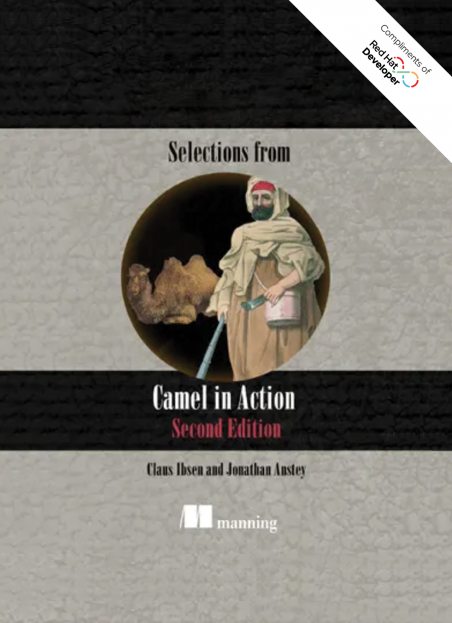

Selections from Camel in Action, 2nd Edition
Overview
Are you building a complex system? Do you need a proven integration framework to bring it all together seamlessly? Do you want to make integration easier and more accessible to developers?
Apache Camel has fundamentally changed the way enterprise Java developers think about system-to-system integration. Start learning about Camel in this e-book, which includes excerpts from the book Camel in Action by Claus Ibsen and Jonathan Anstey (Red Hat engineers who are core developers of Apache Camel). Isben and Anstey distill their extensive experience and practical insights to help you can tackle integration tasks with more success.
In this e-book, you will learn:
What Camel is and how to use it.
Best practices for creating Apache Camel applications that perform useful tasks.
To use Apache Camel to route messages from a variety of transports and APIs.
How to build and deploy lightweight integration applications as microservices.
How to transform data with Camel.
How to find and download a Camel distribution and run examples from the book’s source code.
Excerpt
At the core of the Camel framework is a routing engine—or more precisely, a routing-engine builder. It allows you to define your own routing rules, decide from which sources to accept messages, and determine how to process and send those messages to other destinations. Camel uses an integration language that allows you to define complex routing rules, akin to business processes. As shown in Figure 1.1, Camel forms the glue between disparate systems.
One of the fundamental principles of Camel is that it makes no assumptions about the type of data you need to process.This is an important point, because it gives you, the developer, an opportunity to integrate any kind of system, without the need to convert your data to a canonical format.
